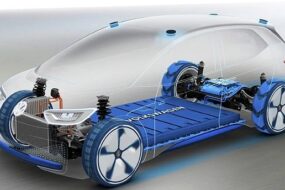Wire and Powder Additive Manufacturing Combined in One Machine
Generally, Wire and Powder Additive Manufacturing Combined in One Machine, figuring out has been a meticulous cycle of interpreting estimations of articles in 3D space onto an orthographic drawing. Today, 3D metrology utilizing laser examining empowers organizations, for example, Dimensional Engineering to rapidly and precisely produce advanced calculation for a complex physical part.
As reception of added substance producing quickens in 2020, clients keep on searching out the best machines, merchants and advancements to address explicit issues and to best fit explicit applications. For instance, organizations in the dental arrangement and custom eyewear businesses have recognized polyamide SLS innovation as a solid match, because of the generally high precision conceivable in that cycle just as the ability to settle a run of parts in three measurements in the assemble chamber. In any case, those parts are little, and in numerous ventures bigger, metal parts are a definitive objective.
On the metals side, there’s a differentiation developing between frameworks that wire powder—ideal for little, multifaceted parts with fine, complex highlights—and frameworks that breaker wire, which regularly have high testimony rates yet bad quality surface completion. Both have focal points and detriments, however numerous clients need the advantages of each in a solitary form.

How Does Meltio’s LMD Metal AM Process Work?
Meltio, a 3D printing technology company based in Linares, Spain, has developed a unique multi-laser printing head which is available as a tool mounted on a robot arm or CNC machine. Similar print head modules can be found in the company’s additive manufacturing machines, such as the M450.
Wire and Powder Additive Manufacturing Combined in One Machine-LMD
In laser metal deposition (LMD) additive manufacturing processes, lasers are directed to create a meltpool on the surface of the workpiece. Material, in powder or wire stock, is fed into the meltpool to build up solid metal with low porosity and a relatively high deposition rate compared to other metal additive processes, such as selective laser sintering (SLS).
While most LMD systems work with either powder or wire, the Meltio print head is capable of feeding both material types. According to the company, this allows users to take advantage of the high deposition rate and low porosity of wire feed systems, and also take advantage of the benefits of powder, such as the capability to mix powders and manipulate the metallurgy of the part during printing to obtain material combinations that are very difficult to build any other way.

How Does Meltio Compare to Other Metal AM Technology Options?
Speed is a significant preferred position of the innovation and the organization asserts its LMD cycle is up to multiple times quicker than direct contenders.
Contrasted with other metal AM frameworks, Meltio’s double material arrangement is conservative. The print head estimates 150mm by 265mm. Metal affidavit can be acted in an argon gas chamber, for example, in the Meltio M450 printer, or it tends to be finished with argon gas protecting, like notable GMAW measures. At the point when utilized in the M450, a form volume of 150x200x450mm is conceivable in a machine impression of 550x600x1400mm.
For cutting edge clients, be that as it may, the best adaptability will be acknowledged with the print head mounted on a gantry, robot or CNC processing machine. The organization expresses that the print head and related motor can likewise be utilized for cutting, cleaning, welding, laser cladding and other laser-based cycles other than AM.
What Should Manufacturers Consider Before Investing in Metal AM Equipment?
Added substance fabricating, particularly for metals, is quickly discovering novel uses in the modern space. Before putting resources into metal AM gear, nonetheless, makers ought to think about a few elements. The following are a couple of significant contemplations.
How Should Parts be Manufactured?
Added substance producing measures have novel properties contrasted with ordinary methods, for example, creation, machining or projecting. For instance, since added substance measures are computerized and require no tooling, part multifaceted nature doesn’t expand creation cost per part, and there is no economy of scale with regards to delivering enormous runs of indistinguishable parts—with an added substance measure, it costs the equivalent to print a thousand novel parts as it does to print a thousand indistinguishable parts.
To transform these one of a kind properties into focal points, the part should be a solid match for the cycle. For instance, a basic stepped sheet section made by the thousands with a press would not be a solid match for added substance. Dental or clinical gadgets, new parts and aviation models are ideal applications because of their low volumes and significant expense to produce subtractively.
To upgrade your cycle for added substance, it’s ideal to update parts to all the more likely exploit the qualities of AM, liberated from customary plan imperatives. Empty, encased structures can spare load at no expense in quality, for instance.
What’s the Best AM Process for an Application?
The second factor producers will consider before putting resources into AM is the particular cycle that will be utilized. For instance, inside metal added substance fabricating, there are advances available which use lasers to intertwine layers of metal from a bed of powder, cover sheets of material or store liquefied material onto the workpiece. Different frameworks may fabricate a “green” part with powder and non-metal folio, which is then sintered in a broiler, evacuating the fastener and contracting and hardening the part.
Every one of these various advances has various favorable circumstances and weaknesses. For instance, metal powder dealing with can be exorbitant and badly arranged. While wire material is anything but difficult to utilize and has a high testimony rate, parts created by means of wire statement cycles may require present machining on accomplish close resiliences, for example, on mating surfaces or openings.
An ongoing report from AMPower thought about the construct pace of an assortment of metal AM innovations available. The report found that by and large, wire affidavit is able to do a lot higher max manufacture rates, up to 1200 cc/hr. In correlation, the most extreme form rate for a powder cycle was 800 cc/hr.
Meltio’s adaptable LMD measure, which utilizes different lasers to add vitality to take care of material and store it on the part, could be a great alternative for certain clients in light of the ability to utilize both wire and powder material. This bears clients greater adaptability to give a superior AM answer for a wide scope of parts and tasks. This advantage is exacerbated by the cutting, welding, and completing elements of the print head.
What Will an AM Solution Cost?
Wire and Powder Additive Manufacturing Combined in One Machine- As per the AMPower report, the expense of metal added substance fabricating machine scales to measure, with huge powder bed combination (PBF), folio flying (BJT), and coordinated vitality statement (DED) machines being the most costly, and most DED frameworks costing the most. Metal intertwined fiber measures, which normally expect parts to be sintered in a broiler in the wake of printing, are the most economical.
Is Meltio LMD AM the Best Option?
Few out of every odd metal part is the best fit for added substance producing, and even among those that are ideal for added substance, few out of every odd added substance measure is best for each part. Choosing the best-added substance producing innovation and hardware for your requirements will extraordinarily build the accomplishment of reception of added substance fabricating abilities.












No Comments